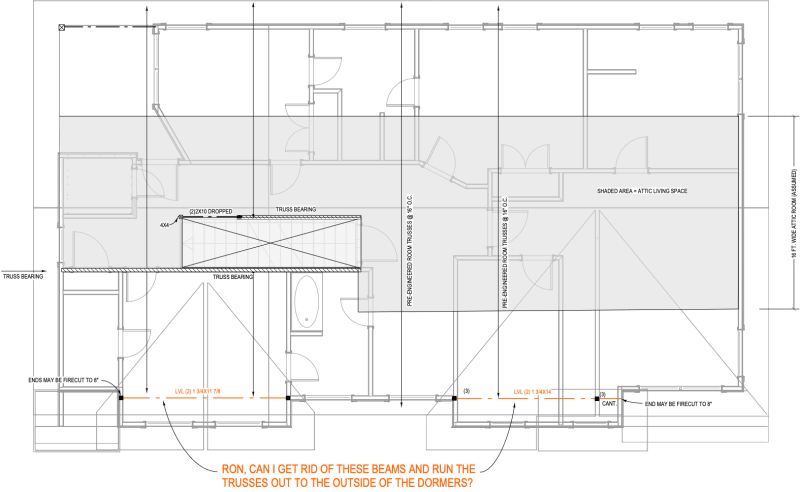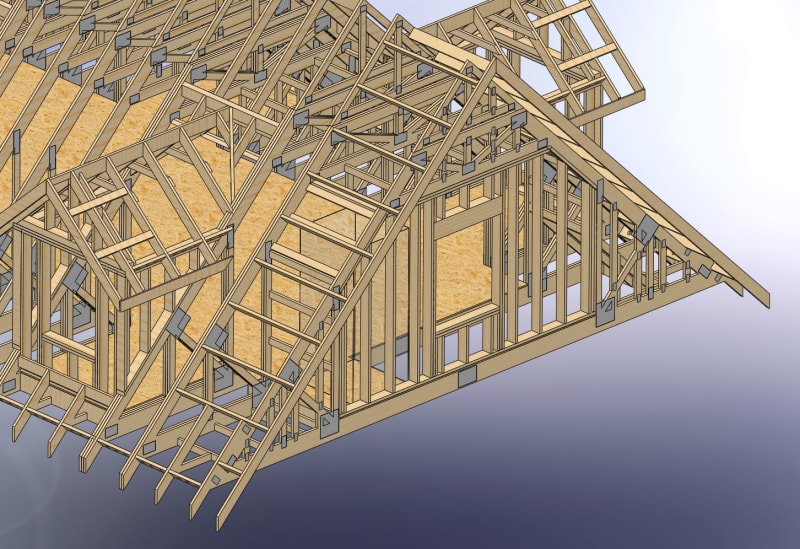XR250
Structural
- Jan 30, 2013
- 5,907
Ok, second post in a day. I would like to get rid of these flush beams and run these attic room trusses out to the dormer wall . The beams do not stack below so I need a bunch of transfer beams. I assume the dormer roof profile would get built into the trusses? The truss span is about 32 ft. I am assuming a 16 ft. wide room @ 30 psf LL.. Roof LL = 20psf
The shaded area is the proposed room footprint. Is theis practical or should I keep the beams?
Thanks

The shaded area is the proposed room footprint. Is theis practical or should I keep the beams?
Thanks


